You know how you sometimes get that super annoying feeling that you are forgetting something?
Well, it's been nagging on us for a while now. What have we forgotten?
There's something that's been put on the back burner and forgotten about, and it's about to boil over.

Just before each room is drywalled, we do a quick run through and make sure the mechanical systems are all installed properly and hooked up. We do bedrooms and closets first, as they are the simplest.

The scrap pile of drywall just keeps growing,

And pretty soon, we are cornered in the great room, with no choice but to start rocking the kitchens. Kitchens are the most complex, and it's our suspicion that there's something missing.

For the center wall between the two units, we drywall one side with Type X drywall - which is a fire rated drywall to prevent fire between units.

We also want to minimize sound between units so we picked up these guys

Are you itching just looking at this stuff?

The insulation bats get stuffed in the wall between joists

Last at bat ...

And it's drywall time. After drywall goes up, access inside the wall is going to be a nightmare involving undoing and redoing and digging in insulation.
We get the first sheet up to finish the center wall.
The next sheet is for the stove. We check to make sure the vent is in over the range, the plug in is there for the microhood, the 220 oven outlet box is in and wired just in case an electric range is ever used, and of course, the 110 outlet for the electronics on the gas range ... and the gas line is ... not there.
We bought gas ranges for the Moms last January, and somehow, putting the gas line in has gotten put on the back burner ... and forgotten about. Well, if we don't get a gas line in, there won't be a back burner, or a front burner for the matter.
Outside we go.

Armed with the concrete drill.
We decided to run the gas line in the deck ledger board so we don't have to mess up the siding to get the line in. Also, this puts the fitting for changing out propane tanks at a good height. And then we can run the gas line in the floor joists instead of the wall.

We opted to use iron pipe for the gas line because we want to minimize future maintenance. A flexible line will do the job, but for how long? We don't have that answer, but here's what we do know: the black iron pipe might be a little more work, but it will last longer.
When we run a pipe that doesn't bend or give down floor joists, the Ram makes up a pattern from a scrap piece of plywood.

Then he can use this pattern to drill holes all the way down the floor joists, lined up perfectly.

Once the pattern holes are drilled, we can the drill larger holes for the pipes.

These things would be much easier done beforehand. The big drill had trouble fitting in between the joists.

So then we tried the little drill. But then this one didn't have the power. After much struggling and bit changes
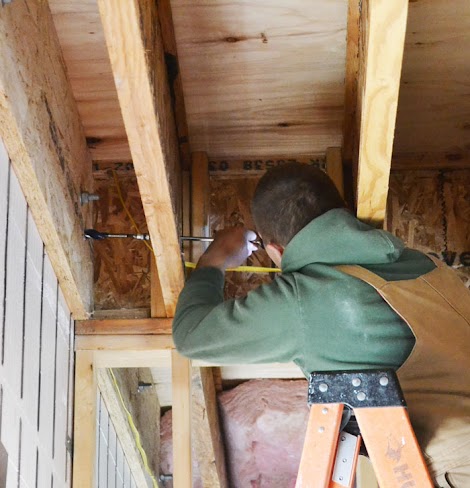
We finally got all the holes drilled

And started threading the pipe through the joists.

The pipe comes in 10 foot sticks
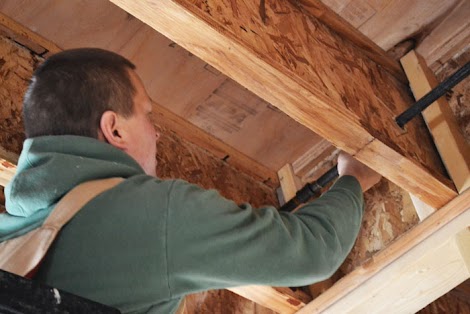
So after one pipe is threaded in from the outside, we add the second and connect with couplings.
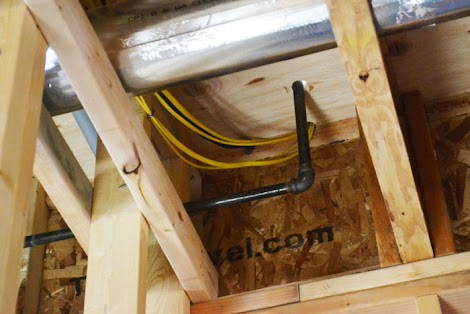
And then elbow up through the floor
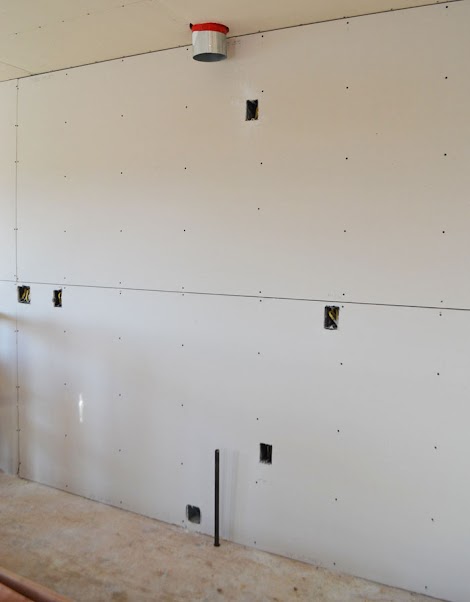
So the gas line is in the floor, behind the range.
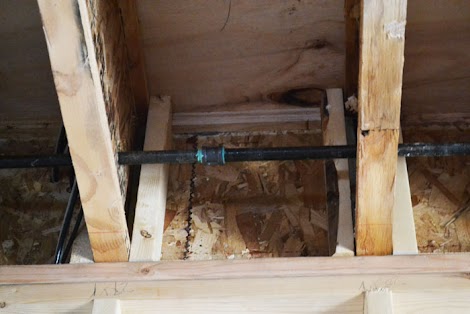
All joints are sealed off.
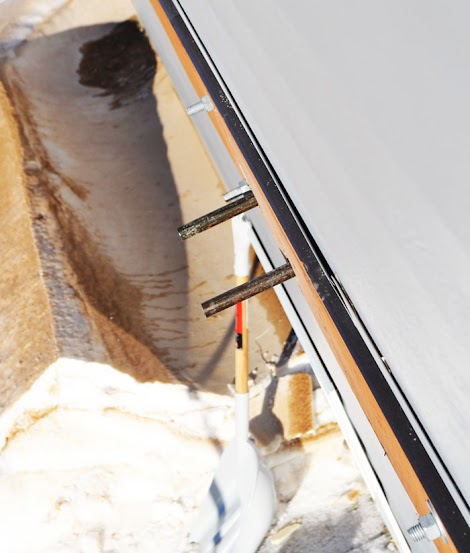
And outside we've got two stub outs that we'll hook two propane tanks to.

The Ram attaches the pressure test gauge to the end of each pipe and fills with air.
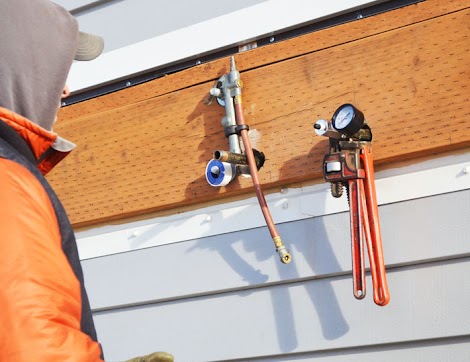
It holds pressure,
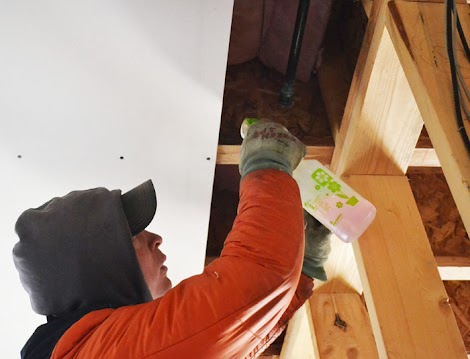
But just to be safe, all the joints get soaped up to check for bubbles.

No bubbles!
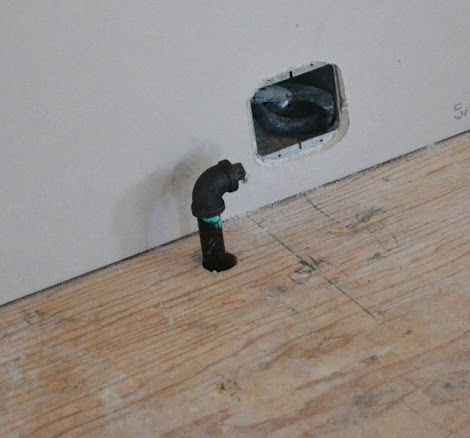
Now we can get back to drywall!
So do you have a gas range? Is it worth the extra trouble? How is yours plumbed in? Do you have a flexible line and have never hand an issue? Or did we make the right choice with the iron pipe?
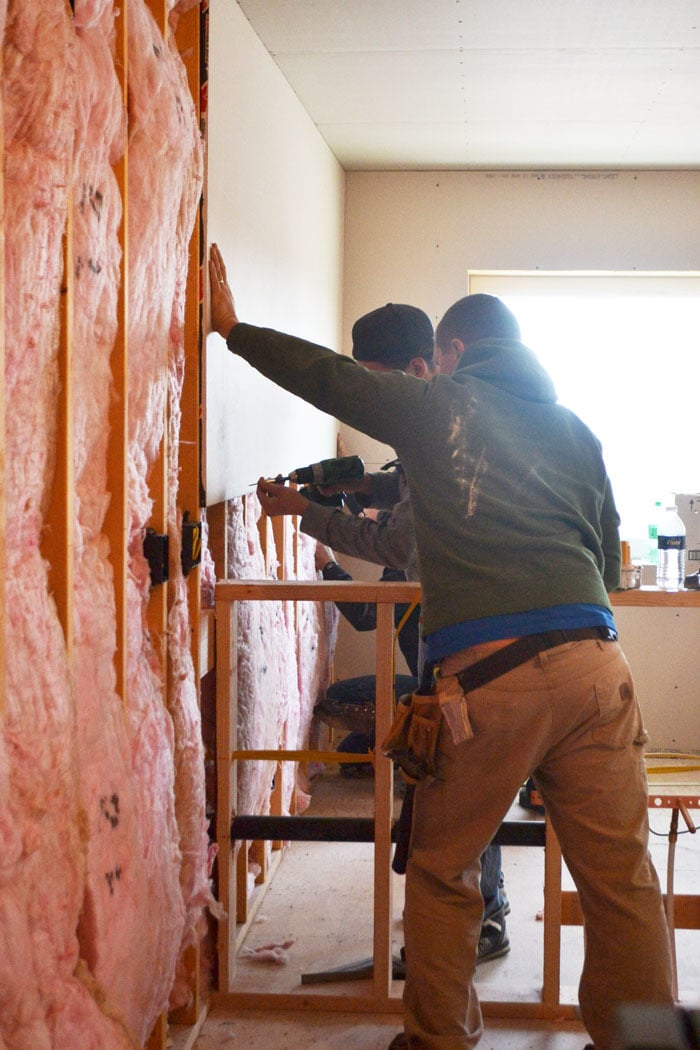
Comments
wittyschaffy
Tue, 03/12/2013 - 14:12
gas range
Jamaunzie
Tue, 03/12/2013 - 16:35
Ana: I worked for a propane
spiceylg
Tue, 03/12/2013 - 17:19
Both
Legossi
Wed, 03/13/2013 - 11:24
We have a gas range and an
LisaMarie
Wed, 03/13/2013 - 17:37
Love my gas stove
Tsu Dho Nimh
Thu, 03/14/2013 - 14:15
Oh dear.
Meg Sluyter
Thu, 03/14/2013 - 22:38
I want a gas stove
aelovan27
Tue, 03/19/2013 - 08:23
I WISH!!